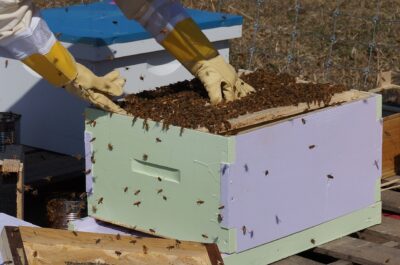The Langstroth beehive is a revolutionary design in modern beekeeping that has significantly influenced the industry since its creation in the mid-19th century by Reverend Lorenzo Lorraine Langstroth. This hive design addresses several challenges faced by beekeepers, offering a practical and efficient solution for managing honeybee colonies.
The Langstroth hive consists of rectangular boxes stacked vertically, each containing frames that hold the honeycomb. The frames can be easily removed for inspection and honey extraction. The key innovation of Langstroth’s design is the use of movable frames with a specific bee space (about 3/8 inch or 9.5 mm) between them. This space allows bees to move freely within the hive without attaching comb to the walls, making it easier for beekeepers to manipulate frames and manage colonies.
The hive’s modular structure enables expansion by adding additional boxes as the colony grows. This scalability is crucial for accommodating the increasing population of bees during honey production seasons. The Langstroth hive also facilitates colony management practices such as swarm control, pest control, and disease inspection, enhancing the overall health and productivity of bee colonies.
Langstroth hives have become the standard in modern beekeeping due to their efficiency, practicality, and adaptability. Beekeepers around the world appreciate the ease of use and versatility provided by this hive design. Additionally, the Langstroth hive has played a significant role in commercial beekeeping, enabling large-scale honey production and pollination services.
While variations exist, the fundamental principles of the Langstroth hive remain largely unchanged, and it continues to be a cornerstone in the practice of beekeeping, contributing to the sustainability of honeybee populations and the pollination of crops globally. Langstroth has deservedly become the standard hive.




